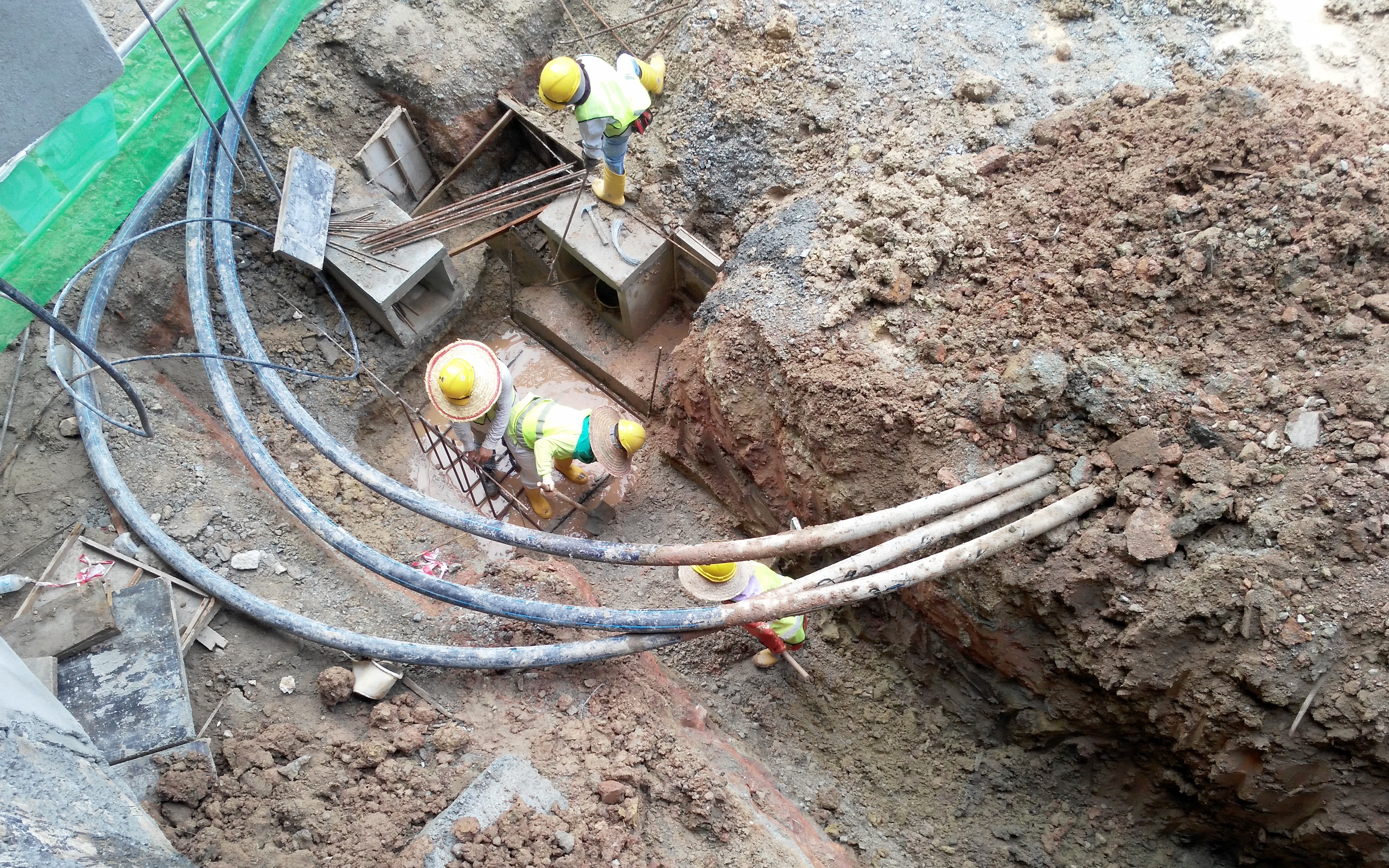Electric Cable Ducting Underground: Key Considerations for Developers

Introduction: Future-Proofing Power Infrastructure
Whether you’re building a new subdivision, a large commercial complex, or upgrading infrastructure, electric cable ducting underground is an essential part of delivering safe, reliable, and compliant power. For developers, choosing the right approach early in the project can avoid costly delays, future-proof your build, and improve safety for years to come.
At Ester Services, we specialise in end-to-end underground power solutions across Auckland and wider New Zealand. In this guide, we’ll explore the key considerations developers must keep in mind when planning underground electric cable ducting - with real-world insights from one of our recent projects.
Why Ducting Matters in Underground Electrical Installations
Underground cable ducting refers to the protective conduits that house electrical cables beneath the ground. These ducts not only shield the cables from physical damage and water ingress, but also:
- Enable future upgrades without full excavation
- Ensure compliance with NZ electrical codes
- Improve site safety by reducing trip hazards and exposure
- Streamline network maintenance and fault detection
For developers, planning ducting correctly is critical to ensuring smooth installation, power reliability, and inspection approvals.
1. Early Planning & Coordination with Other Services
One of the most common oversights in subdivision or commercial development is late-stage ducting planning. Underground cable ducts must be laid with clearances from:
- Water mains
- Fibre and telco ducts
- Stormwater and wastewater pipes
- Gas infrastructure
Tip: At Ester Services, we work closely with developers, civil contractors, and utility providers to design coordinated ducting routes, minimising conflicts and trenching overlaps.
2. Choosing the Right Type of Ducting
The most common ducting material for electrical applications in NZ is HDPE (High-Density Polyethylene) or PVC conduit, depending on the voltage, site conditions, and installation method.
- Heavy-duty PVC conduit is typically used in trench-based residential installations.
- HDPE is preferred in directional drilling or longer duct runs due to its flexibility and durability.
Ester Services will assess your project’s terrain, depth requirements, and power load to recommend the best ducting solution that complies with AS/NZS 3000 and utility standards.
3. Depth, Spacing & Compliance Standards
In New Zealand, ducting installations must meet specific depth and separation requirements depending on the type of power supply (LV, HV), site type, and presence of other services.
Typical ducting guidelines include:
- Minimum burial depth: 600mm for LV cables in domestic areas; 900mm or more in road reserves
- Warning tape: Placed above ducts to prevent accidental hits
- Separation: Maintain safe distance from other underground utilities
Failure to meet these requirements can lead to inspection failure, rework, or even serious safety risks.
4. Trenching vs Directional Drilling
Developers have two primary options for laying ducting:
Trenching
The traditional method where an open trench is dug, ducts are laid, and backfilled. It’s cost-effective for new builds or subdivisions where the ground is already exposed.
Directional Drilling (Trenchless)
Ideal for built-up areas, driveways, or roads where minimal surface disruption is required. Although more technically involved, it reduces reinstatement costs and disruption to residents or traffic.
Ester Services offers both, with in-house directional drilling expertise and trenching teams to suit the needs of each project.
5. Documentation & Quality Assurance
Council inspections and utility approvals often require detailed QA documentation, such as:
- As-built drawings showing duct location, depth, and orientation
- Photos of ducting pre-backfill
- Compliance certification from licensed electricians
Our project managers work with developers to ensure every duct installation is fully documented and certified - helping you meet sign-off milestones without delay.
Case Study: Pt Chev Apartments – 900m of Electric Cable Ducting
One of Ester Services’ standout ducting projects involved the Pt Chevalier Apartments, a multi-storey development requiring robust underground power delivery to support EV charging, elevators, lighting, and common areas.
Scope:
- 900m of underground electric cable ducting
- Trenching across tight urban accessways
- Coordination with fibre, water, and stormwater networks
- QA documentation and compliance for inspection sign-off
Challenges:
- Navigating existing underground utilities with minimal space
- Working within strict council timelines and safety protocols
Solution:
- Used heavy-duty PVC ducting with concrete encasement in high-risk zones
- Installed separation barriers and conducted live service location before trenching
- Delivered full QA report with as-builts and pre-backfill photos
Result:
Power was delivered on time with no compliance issues - enabling the client to proceed with
construction milestones confidently.
6. Working with a Certified Underground Contractor
Choosing the right contractor is essential. At Ester Services, we’re not just electricians - we’re certified underground power specialists, trusted by developers across Auckland and NZ.
Our team delivers:
- Design and install of ducting systems
- Cable pulling, jointing, and termination
- Fault detection and repair
- Council and utility sign-off support
We’re a Master Electrician member, Site Safe compliant, and experienced in working on major civil infrastructure as well as boutique residential builds.
Final Thoughts: Future-Proof Your Development
Electric cable ducting underground isn’t just a box to tick - it’s the foundation of a safe, scalable, and compliant power network. By partnering with an experienced contractor like Ester Services early in your project, you’ll avoid surprises, stay on schedule, and ensure long-term peace of mind.
Ready to Plan Your Underground Power Ducting?
If you're a developer planning underground cabling in Auckland, North Shore, or West Auckland, contact Ester Services for a free quote or site consultation. Our team is here to make your next project safe, seamless, and compliant.
